Speculatively discussing what the best Grateful Dead song is has basically evolved into a full-blown American tradition—the musical equivalency of dudes just literally sitting around and naming old sports players while having the best time. The Dead’s legacy as one of the most (if not the most) important American rock band of all time, built up by a dozen essential factors ranging from nostalgia-fueled side project touring post-Jerry’s passing to careful reissuing and curation from David Lemieux, feels all but solidified at this point. So naturally, trying to boil that importance down to one song is how we process things.
“Dark Star” certainly could and should be in that conversation for a multitude of reasons, but likely because it represents both literal and musical mystery. It was both a jam where the middle could feel like dizzying, windswept fantasia at any given time and also a song that the Dead, despite clamoring from fans, just ignored for long stretches—from October 18th, 1974 to December 31st, 1978, when the band was at the peak of their powers, they did not play it once, and through most of the ’80s the song remained unplayed.
Jeffrey Alexander knows all of this better than I ever could—after all, he was there, seeing Jerry perform over 150 times until his passing in the mid-’90s. Alexander, along with his band the Heavy Lidders, recently released the EP SPACIOUS MINDS via Arrowhawk Records, which literally kicks off with a heady, free-falling version of “Dark Star.” As you’ll read in our interview below, I figured he was the best person to dive into the mysteries of it with, both musically and literally.
What is your relationship to the Dead beyond their work being an obvious touchstone and influence musically?
JA: My other band is the Dire Wolves Just Exactly Perfect Sisters Band—a few years ago, we shortened it to just DWLVS for ease. DWLVS started up in its earliest configuration in 2008 and has been going ever since, we have a brand new LP (our ninth full-length) coming out in November 2023 on Centripetal Force. But believe it or not, the band name actually came from the Dungeons and Dragons Monster Manual. I was an avid Deadhead back in the ’80s—I got turned on when I was in High School and traveled back and forth across the country going to Dead shows and Jerry Garcia Band shows for many years. I was all-in, selling food and beer in the lots to pay for gas, tickets, drugs, night after night after night, usually in the tapers section.
I love that your fandom really embodies that legacy of what it means to be a Deadhead, literally with selling beer and food on Shakedown to get to the next gig, but also spiritually in the myth of what being a fan of the band then means to future generations now. That gig-to-gig traveling fan experience is something very different today.
JA: My last show as a regular touring head was also Brent Mydland’s last show—Chicago 1990. Between Dead tours and JGB shows, I was fortunate to witness Jerry Garcia perform more than 150 times, but every single Dead show I went to featured Brent. I was an ’80s tour kid, that was my era. Simply my time to be on the road for months at a time, several times a year. As that 1990 summer tour was winding down with East Coast stadium shows and then another couple of nights in Deer Creek, I had already decided to take a break. I had recently quit drugs and drinking, which had been taking a heavy toll, and the expansion of the crowds and blown-up scene weren’t so enjoyable when sober. It all got really bloated. So, I figured the last three shows in Chicago were going to be my last ones for a good long spell. And then when Brent died three days after those, I just packed it in for good. It was all too much. After that, I just dialed back my Dead listening generally and got way more into things that were always around me. Just deeper dives into folk music and jazz and modern independent sounds too.
I’m a huge fan of ’90s Dead, although I suppose, to me, that dividing line did become when Brent dies and Vince Welnick and Bruce Hornsby pick things up and the tone of the jams changes a lot.
JA: I did not listen to any of the Hornsby/Welnick stuff at all—I’m wholly unfamiliar with ’90s Dead. But they had some really fine runs in the ’80s—not all of it was great, by any means, but when it was ON it was ON. They pulled out some truly special, inspired sets.
Have you had a chance to see what that parking lot scene is like these days via Dead & Co. etc?
JA: I didn’t get into any of the post-Dead offshoots—Other Ones, or Phil and Friends, any of that. I just became more interested in other, varied things. Now, all that said, a friend of mine, Ryan Emmett, in Pittsburgh, got me psyched up to go to a Furthur show in 2010, and I loved it. It was my first Dead-related concert experience in literally 20 years. After that, I went to a handful of Furthur shows in San Francisco and also one in 2013 at the fabulous Greek in Berkeley—which I hadn’t been to since the ’80s Dead touring days. So I was having a bit of a resurgence of interest in middle age, I guess, and soon after, I heard about the Fare Thee Well 50th anniversary concerts. So I went to all of them—two in Santa Clara and three in Chicago. I haven’t been to any Dead-related shows since Fare Thee Well. Mayer does not interest me in the least. Kind of the same overblown vibe that made me want to quit 30 years ago.
“Dark Star” is such a formative live song for the Dead especially, one of the jams in their catalog that I’d argue borders on spiritual. What’s your relationship to “Dark Star,” and why choose it as a song to tackle?
JA: I was heavily involved in college radio and did a stint as the station’s record librarian—between Dead tours! There, I soaked in all kinds of disparate sounds like trad folk and jazz and blues and noise. The Dead encapsulated all of that for me, “Dark Star” especially. A melding of so many styles, heavily improvised, never performed the same way. And a kind of DIY ethic that I also learned from punk and indie rock. The first “Dark Star” that I witnessed live was in Hampton, Virginia in October 1989. It was ecstatic—the crowd refused to leave after the house lights came up. The entire coliseum was just stomping and howling for 20 minutes. It was amazing. Also, the first “Attics of My Life” since 1972, what a night.
Are there any specific “Dark Star” performances, by the Dead or otherwise, that you think informed your thoughts going into recording this one?
JA: My favorites are probably Fillmore West, February and March 1969—one of these was used (in part) on LIVE/DEAD and the others are all featured on the complete Fillmore West box. Tom Constanten’s organ is just so great. I met him once when he played a small in-store at the Psychedelic Shop near The Warfield in San Francisco, December 1989. This was the one night off during that week of The Dead’s New Year’s shows over in Oakland. He played an incredible solo electric piano version of “Dark Star” that night that has also really stayed with me, I have it on cassette somewhere. Another “Dark Star” that I really loved seeing live was March 1990 at Nassau Coliseum on Long Island. When Branford Marsalis walked out on stage near the end of the first set, I knew we were in for something great. Exploratory and out. I knew that for our live Lidders version, I wanted to put down the guitar at some point and move over to my Moog synthesizer to get real out as well. I threw in a little Moog reference to the 1-22-78 CLOSE ENCOUNTERS jam for good measure before picking the guitar up again.
Beyond “Dark Star,” are there moments or solos or jams across either the Dead or any catalog that you frequently return to in a way that might reverberate through that songwriting process?
JA: Oh, for sure. With the Dead, my favorites are “Eyes Of The World,” “Here Comes Sunshine,” “Help On The Way,” that sort of thing—the ’73-’75 jazzy, airy, tropical vibes. This kind of feeling I hope shows up in my stuff. This is what interests me—not the jamming at all really, but the feeling, and definitely the airyness. Loose and free. Mostly mixolydian.
That Nassau Coliseum “Dark Star” you referenced earlier is incredible—and pretty loose and free. Having Branford Marsalis just go absolutely buck wild, and follow that into the subsequent “Space” as well before returning to close “Dark Star,” is so striking and shaggy. I feel like your version doesn’t get quite as literally chaotic, but the guitar over Moog playing you reference really straddles a line between an early, primal Dead energy and the kind of intentioned hang of this ’90s cut.
JA: There’s a really great interview with Branford Marsalis—I forget where, YouTube somewhere—where he is discussing the essence of playing with the Dead. Like before he stepped out at that show I was at in Nassau, he had never played with them before, or even really heard them. But obviously dude is a fucking pro. And he immediately realizes that they are simply an improvising R&B bar band, totally influenced by jazz, in a rock setting. This is the kind of thing that interests me the most and what I like to explore with my current bands DWLVS and Heavy Lidders—maybe more so with DWLVS as we are completely improv, but the Lidders straddle that line between songcraft and free jamming.
So with that said, how much of your composing of “Dark Star” or any of the jams with the Heavy Lidders come from true improvisational jamming in the studio, because in a great way the playing across the whole EP is loose and shaggy, but moments on, say, “Hidden Treasure,” feel far too naturally thought-out and constructed to be fully improvisational.
JA: SPACIOUS MINDS is a collection of live tracks, all completely improvised—except for “Dark Star,” of course, where we had the lyric sections and the famous riff as guideposts. But in-between was all extemporaneous. None of these were recorded in a studio—they were from a Record Crates United backyard party and Raven Sings The Blues’ first Deep In The Valley festival, both in 2022. “Spacious Minds,” the title track, was simply a live jam that I later turned into a song. I overdubbed Moog and vocals in my home studio a few weeks after the concert. We did a lot of this on the upcoming Lidders LP, NEW EARTH SEED, as well.
The first single for that record, “Star Power,” is such a rollicking, mountainous jam. That middle section—or I suppose, most everything between the vocal sections—has such a weighty, searching, lost in the wilderness vibe in such a beautiful way.
JA: So “Star Power” was a chord structure that Drew Gardner came up with and we improvised over it. Later, at home, I added vocals and turned it from a jam into a song. It’s an interesting way to work, something that I’ve been experimenting with. The first Heavy Lidders record was made up of songs that I wrote ahead of time and the others had to learn the chord changes and structures ahead of time, as well as a few covers. This is just different. I don’t know what works better—like I said, I’m experimenting, and I’m still experimenting, so this is new for me. Especially after 10+ years of DWLVS where there is no song structure at all.
On this new album, are there any sonic touch points that carry over from SPACIOUS MINDS?
JA: Interestingly, we recorded the new NEW SEED EARTH long before SPACIOUS MINDS. So there might be touchpoints the other way around, but who knows? It’s all a continuum in my brain. I guess the one piece that especially ties both releases together is the track “Cordial Ohms.” That one was originally recorded for the LP and might have been our favorite bit, to be honest. But our producer said that “some things are better left on the cutting room floor,” ha! That’s fine. So I put it on the cassette project instead. A special Heavy Lidders anagram, from me to you.
You can check out the SPACIOUS MINDS EP over on Bandcamp, and be sure to pre-order NEW SEED EARTH, out via Arrowhawk Records on September 22nd!



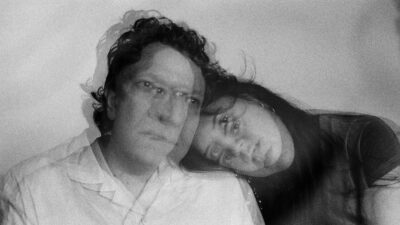
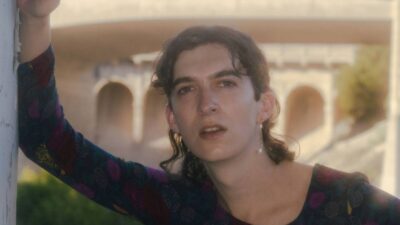


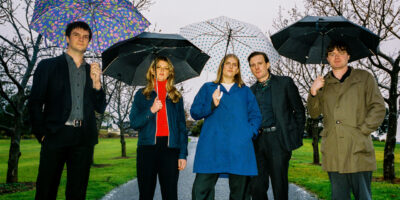
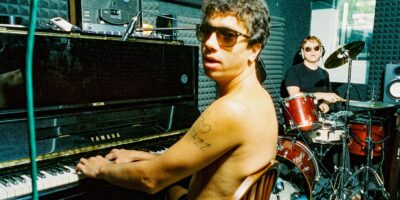
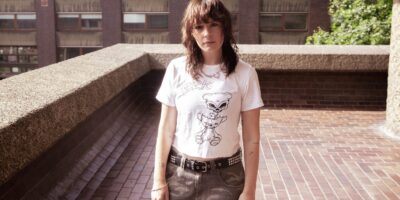
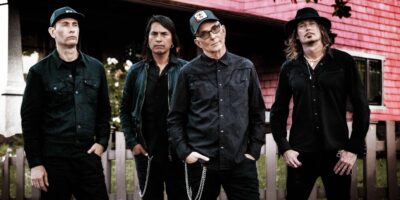
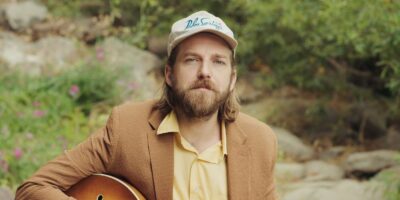


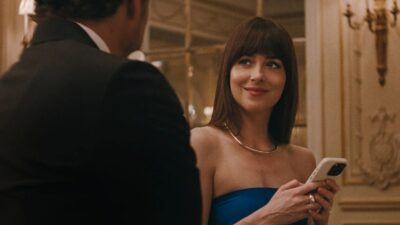
Comments